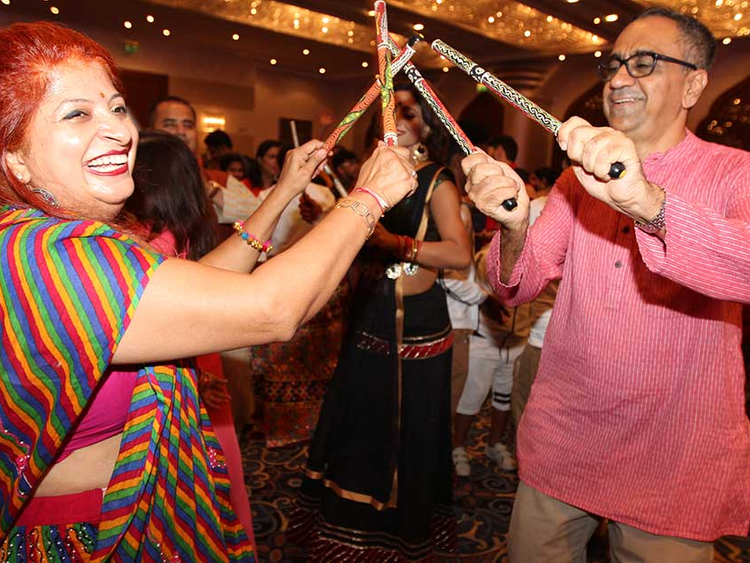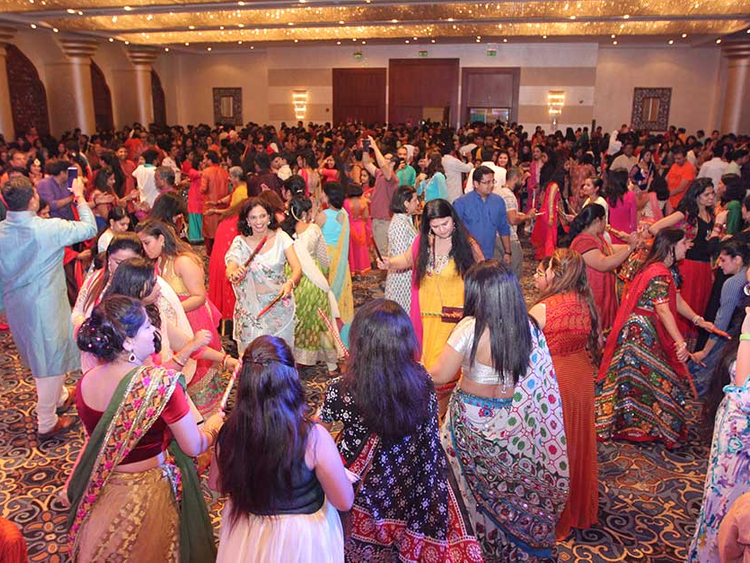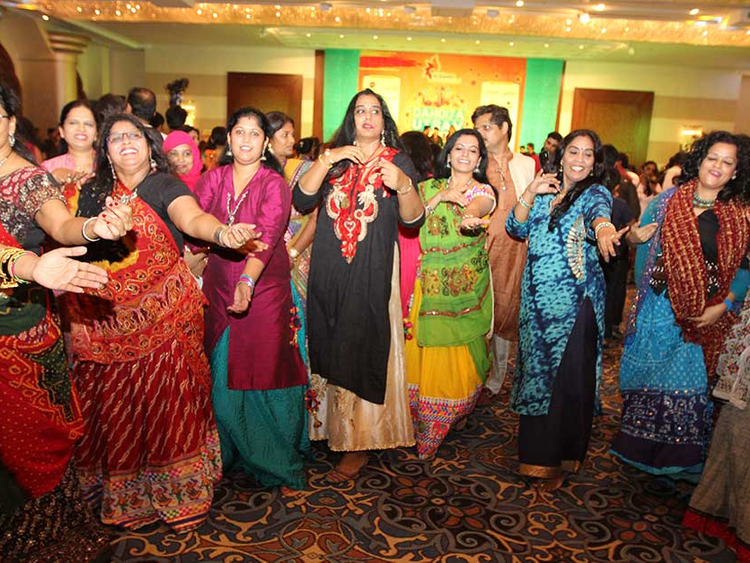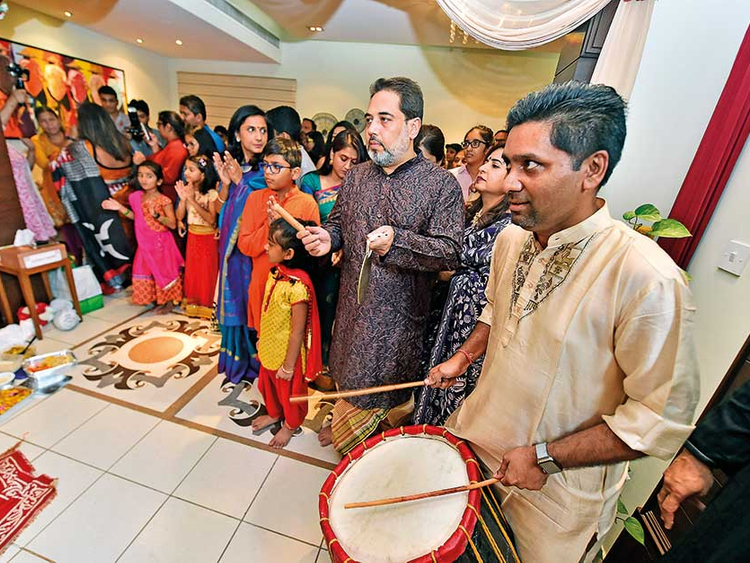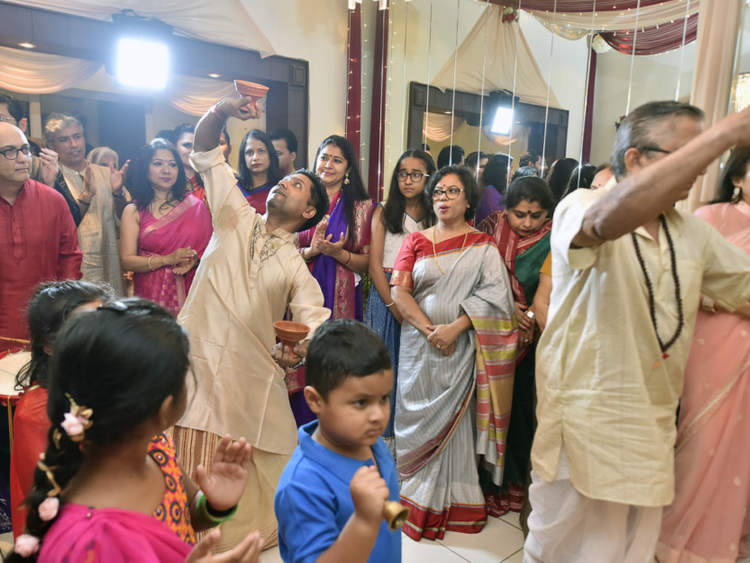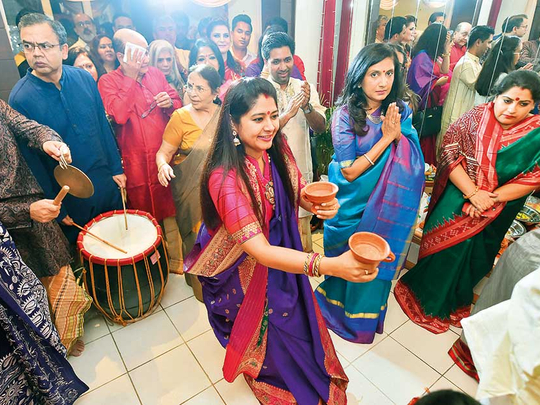
Dubai: Festivity and gaiety continue to mark the Durga Puja festival as expatriates from India and Bangladesh celebrate the homecoming of their deity Durga.
The nine-day long festival reached its high point on Shashti (sixth) day on Tuesday with the community observing the Saptami (seventh), Ashtami (eighth) and Navami (ninth) days of auspiciousness. The festival culminates in Dashami (tenth day) on Saturday which is also called Dussehra, when the deity is bid farewell.
One of the most vibrant aspects of the final day celebrations is the Sindhur Khela ritual which marks the return of the deity to her marital home. An occasion that symbolises exultation mingled with sadness, the deity is offered auspicious vermilion as a symbol of her married status. Women take the vermillion as a blessing from the deity and smear each other with the vibrant colour — a manifestation of their married status.
The women dress in sarees of exquisite traditional Indian weaves of Garad Silk, Jamdani tant and Balucheri, to name a few, while the men wear silk kurtas (a traditional long shirts) and embroidered dhotis (a piece of material tied around the waist as a lower garment) and together invoke Durga, who symbolises the triumph of good over evil, hope over despair. Recitation of Sanskrit verses that extol the triumph of the deity over evil accompanies the ritual.
Sunando Mukhopadhaya, general secretary of the Bharatiya Bangiya Parishad that organises a gathering of more than 1,500 multinational visitors at the Sindhi Ceremonial Hall, Dubai, said: “Durga Puja is an occasion for us to integrate communities. We have been celebrating this festival for 31 years. We have 200 Bengali families who are integral to the festival, but our auditorium is open to everyone. We receive Indians from all states of India. At least 15-20 per cent of the people who visit us during puja are from Bangladesh as this is a place where they get to relive their culture.”
Mukhopadhaya said the celebrations begin at 10.30am every day. “We use the bhog (food offering to the deity) to reach out the hungry, poor and needy. Evenings see a rush of people. The highlight of the festival is the traditional Dhunuchi, which involves a group 100 men dancing holding earthen claypots with burning incense billowing from them. This ritual takes place on the ninth day. The Parishad also organises a drawing and painting competition for children.”
Joydeep Chakravarty of the Abu Dhabi Shardiyo Utsab, said, “We have been celebrating Durga Puja for 15 years and it is an opportunity to introduce our children to the rich heritage of Bengal, its music and literary traditions. We mark our celebrations with the evocation of our deity with shankdhwani [the sounding of the conch].Children sing traditional Bodhuni and Agumani songs. We also organise poetry, music, skits and painting competitions. From wearing traditional weaves to the authentic Bengali cuisine, the nine days celebrate all things Bengali.”
For Somdutta Basu, a vocalist and dancer in Dubai, the Ashtami (eighth day) holds special significance. “The offerings made to the deity on the eighth day symbolise the honour and respect given to women and everyone is allowed to make their offerings on this day.”
Jogiraj Sikdar, founder of the Malhar Centre for Performing Arts (MCPA), initiates the traditinal ‘Dhak’ performance during the celebrations on the eighth day. “These are the traditional drums played by men during the puja and provide a unique rhythm and build up on Ashtami day giving way to the ninth and final day,” said Sikdar.
“We must remember that Durga [the deity] is herself is a non-resident Bengali just like us,” says Dubai resident Sudip Kumar Saha, an expat from Kolkata who is deeply involved in organising a host of cultural activities for the Bengali community in the UAE.
“Every year around this time every Bengali across the world wants to indulge in five glorious days of fun, camaraderie and bliss, and the same sense of euphoria descends on those of us living in Dubai as well. Although there are other festivities across the year, but nothing matches the pomp, excitement or grandeur of Durga Puja. While there are no grand celebrations here and we miss the dazzling illumination motifs that surround every puja enclosure in Bengal, the community here celebrates by gathering with close friends and family – who drop by for an Ashtami dinner or Nabomi lunch cooked in impeccable Bengali tradition. Accompanying this are the customary Bengali cultural components – music, dance and personal skits. In this manner, we also try to pass on our cultural heritage to our next generation, who are mostly deprived of such experience while growing up as expat children,” says Saha.


